Country
Operator Image
Crash of a Vickers 802 Viscount on Mt Ben More: 4 killed
Date & Time:
Jan 19, 1973 at 1431 LT
Registration:
G-AOHI
Survivors:
No
Schedule:
Glasgow - Glasgow
MSN:
158
YOM:
1957
Crew on board:
2
Crew fatalities:
Pax on board:
2
Pax fatalities:
Other fatalities:
Total fatalities:
4
Captain / Total hours on type:
1835.00
Copilot / Total hours on type:
606
Aircraft flight hours:
32677
Circumstances:
The crew departed Glasgow Airport at 1422LT on a local post-maintenance test flight with two engineers and two pilots on board. The airplane flew north at an altitude of 4,000 feet under VFR mode for approximately 7 minutes and a half when the captain asked for clearance back into the Glasgow Control Zone. Less than two minutes later, while cruising in poor weather conditions (snow showers), the airplane struck the slope of Mt Ben More (3,852 feet high). The aircraft disintegrated on impact and all four occupants were killed.
Crew:
Walter Duward, pilot,
Stan Kemp, copilot.
Passengers:
Paddy Quinn, engineer,
Jimmy Moore, engineer.
Crew:
Walter Duward, pilot,
Stan Kemp, copilot.
Passengers:
Paddy Quinn, engineer,
Jimmy Moore, engineer.
Probable cause:
The aircraft struck a mountain peak whilst flying over snow covered high terrain in marginal visual meteorological conditions. Failure to maintain a safe altitude and insufficient attention to navigational procedures were contributory factors. The following factors were reported:
- Although the Captain obtained some weather information during his visit to the meteorological office he did not seek a briefing from the Duty Forecaster. This may have deprived him of information about the strong winds at his proposed flight level,
- The minimum sector altitude for the area was 4,400 feet and BEA's minimum safe altitude was 5,000 feet; nevertheless the decision to fly at FL 40 (3,800 feet amsl) was permissible for a VFR flight,
- The decision to operate under VFR in the prevailing weather conditions was questionable but probably explicable in the light of the nature of the flight,
- Map reading over snow covered terrain in the prevailing weather conditions would have presented obvious difficulties. The possibility of error may have been increased by temporary distractions resulting from preoccupation with the flight engineering test programme,
- The exact circumstances of the accident are not known, but it probably occurred whilst the aircraft was flying in 'whiteout' conditions associated with a snow shower.
- Although the Captain obtained some weather information during his visit to the meteorological office he did not seek a briefing from the Duty Forecaster. This may have deprived him of information about the strong winds at his proposed flight level,
- The minimum sector altitude for the area was 4,400 feet and BEA's minimum safe altitude was 5,000 feet; nevertheless the decision to fly at FL 40 (3,800 feet amsl) was permissible for a VFR flight,
- The decision to operate under VFR in the prevailing weather conditions was questionable but probably explicable in the light of the nature of the flight,
- Map reading over snow covered terrain in the prevailing weather conditions would have presented obvious difficulties. The possibility of error may have been increased by temporary distractions resulting from preoccupation with the flight engineering test programme,
- The exact circumstances of the accident are not known, but it probably occurred whilst the aircraft was flying in 'whiteout' conditions associated with a snow shower.
Final Report:
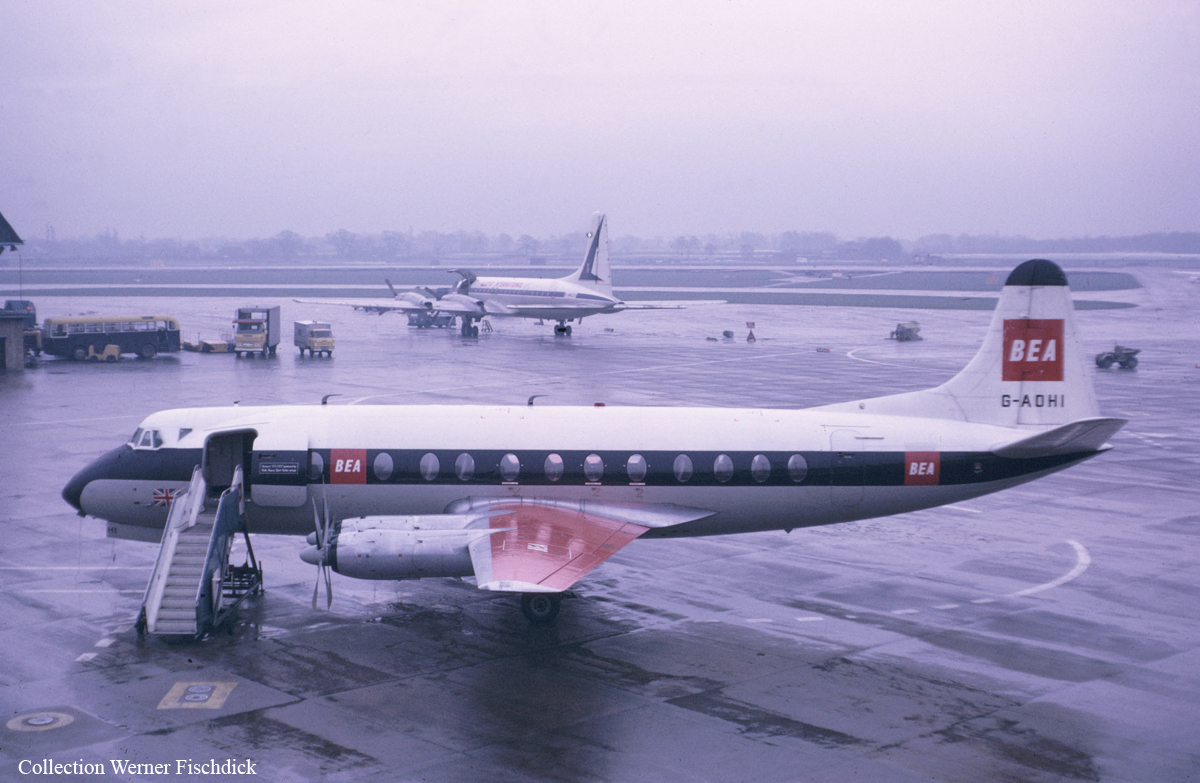
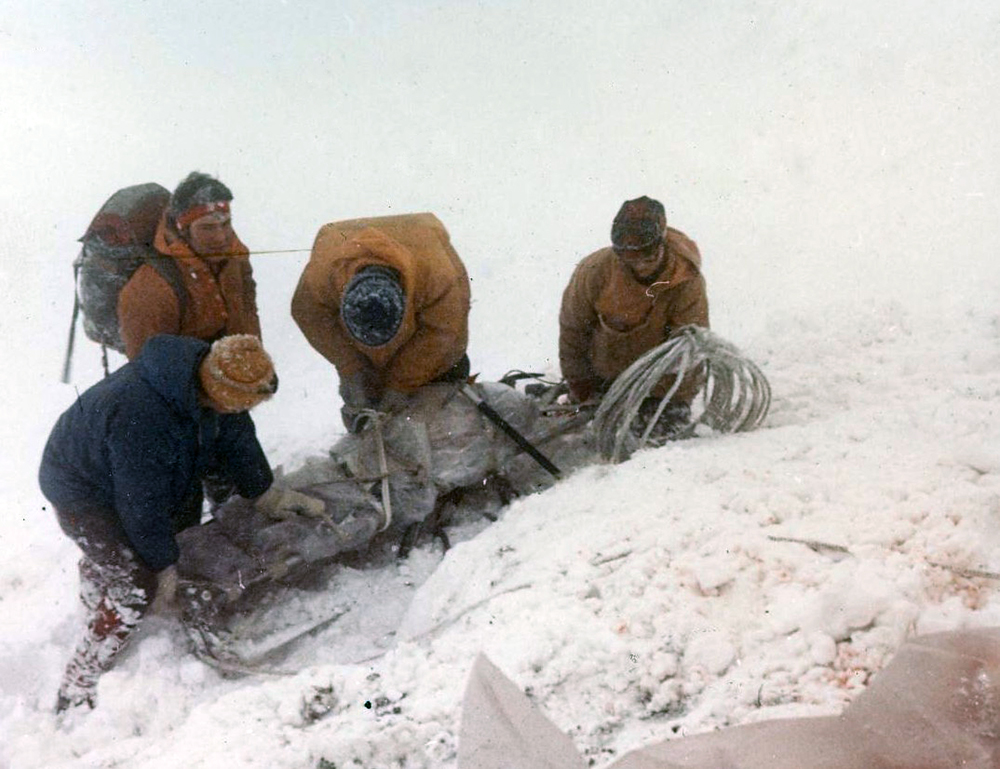
Crash of a Hawker-Siddeley HS.121 Trident 1C in London: 118 killed
Date & Time:
Jun 18, 1972 at 1711 LT
Registration:
G-ARPI
Survivors:
No
Schedule:
London - Brussels
MSN:
2109
YOM:
1964
Flight number:
BE548
Crew on board:
9
Crew fatalities:
Pax on board:
109
Pax fatalities:
Other fatalities:
Total fatalities:
118
Captain / Total hours on type:
4000.00
Copilot / Total hours on type:
750
Circumstances:
Following a normal takeoff roll on runway 28R, the aircraft rotated 42 seconds after brakes were released and lifted off 2 seconds later at 145 knots IAS. At 63 seconds the autopilot was engaged 355 feet above the runway at 170 knots IAS; the IAS speed lock was selected shortly thereafter. At 74 seconds the aircraft started a 20° banked turn to port towards the Epsom Non-Directional Beacon (NDB). At 83 seconds the captain reported 'Climbing as cleared'. He was then instructed to change frequency and contact London Air Traffic Control Centre. At 93 seconds the noise-abatement procedure was initiated. On the assumption that the captain was the handling pilot, this would involve the second officer selecting the flaps fully up and operating the thrust levers to reduce power to the pre-calculated figure. At 100 seconds the captain called 'Passing 1500' and at 103 seconds the aircraft was cleared to climb to Flight Level 60. This message was acknowledged by the captain at 108 seconds with the terse call 'up to 60'. This was the last message received from the flight. At second 114 when the airspeed was 162 knots and the altitude 1,772 feet, the droop lever was selected up putting the aircraft into the area of the stall as the droop started to move. At second 116 the stick-pusher stall recovery device operated, causing the autopilot automatically to disengage and the nose of the aircraft to pitch down and the stick-push to cease as the incidence decreased. Since the elevator trim would stay at its position on autopilot disengagement which at that speed with the droop up would be - the incidence then increased causing a second stick-push at second 124 and a third at second 127. At second 128 the stall recovery system was manually inhibited by pulling the lever. The aircraft then pitched up rapidly, losing speed and height, entering very soon afterwards the true aerodynamic stall and then a deep stall from which at that height no recovery was possible. Impact was at second 150 in a field next to the A30 motorway. The aircraft was totally destroyed and none of the 118 occupants survived the crash.
Probable cause:
The immediate causes of the accident were these:
- A failure by Captain Key to achieve and maintain adequate speed after noise-abatement procedures,
- Retraction of the droops at some 60 knots below the proper speed causing the aircraft to enter the stall regime and the stick-shaker and pusher to operate,
- Failure by the crew to monitor the speed errors and to observe the movement of the droop lever,
- Failure by the crew to diagnose the reason for the stick-shaker operation and the concomitant warnings,
- The dumping by the crew of the stall recovery system.
The underlying causes were these:
- The abnormal heart condition of Captain Key leading to lack of concentration and impaired judgment sufficient to account for his toleration of the speed errors and to his retraction of, or order to retract, the droops in mistake for the flaps,
- Some distraction, the nature of which is uncertain, possibly due to the presence of Captain Collins as a passenger on the flight deck, which caused S/O Ticehurst's attention to wander from his monitoring duties,
- Lack of training directed at the possibility of 'subtle' pilot incapacitation,
- Lack of experience of S/O Keighley,
- Lack of knowledge in the crew of the possibility or implication of a change of configuration stall,
- Lack of knowledge on the part of the crew that a stick-shaker and push might be experienced almost simultaneously and of the probable cause of such an event,
- Lack of any mechanism to prevent retraction of the droops at too low a speed after flap-retraction.
- A failure by Captain Key to achieve and maintain adequate speed after noise-abatement procedures,
- Retraction of the droops at some 60 knots below the proper speed causing the aircraft to enter the stall regime and the stick-shaker and pusher to operate,
- Failure by the crew to monitor the speed errors and to observe the movement of the droop lever,
- Failure by the crew to diagnose the reason for the stick-shaker operation and the concomitant warnings,
- The dumping by the crew of the stall recovery system.
The underlying causes were these:
- The abnormal heart condition of Captain Key leading to lack of concentration and impaired judgment sufficient to account for his toleration of the speed errors and to his retraction of, or order to retract, the droops in mistake for the flaps,
- Some distraction, the nature of which is uncertain, possibly due to the presence of Captain Collins as a passenger on the flight deck, which caused S/O Ticehurst's attention to wander from his monitoring duties,
- Lack of training directed at the possibility of 'subtle' pilot incapacitation,
- Lack of experience of S/O Keighley,
- Lack of knowledge in the crew of the possibility or implication of a change of configuration stall,
- Lack of knowledge on the part of the crew that a stick-shaker and push might be experienced almost simultaneously and of the probable cause of such an event,
- Lack of any mechanism to prevent retraction of the droops at too low a speed after flap-retraction.
Final Report:
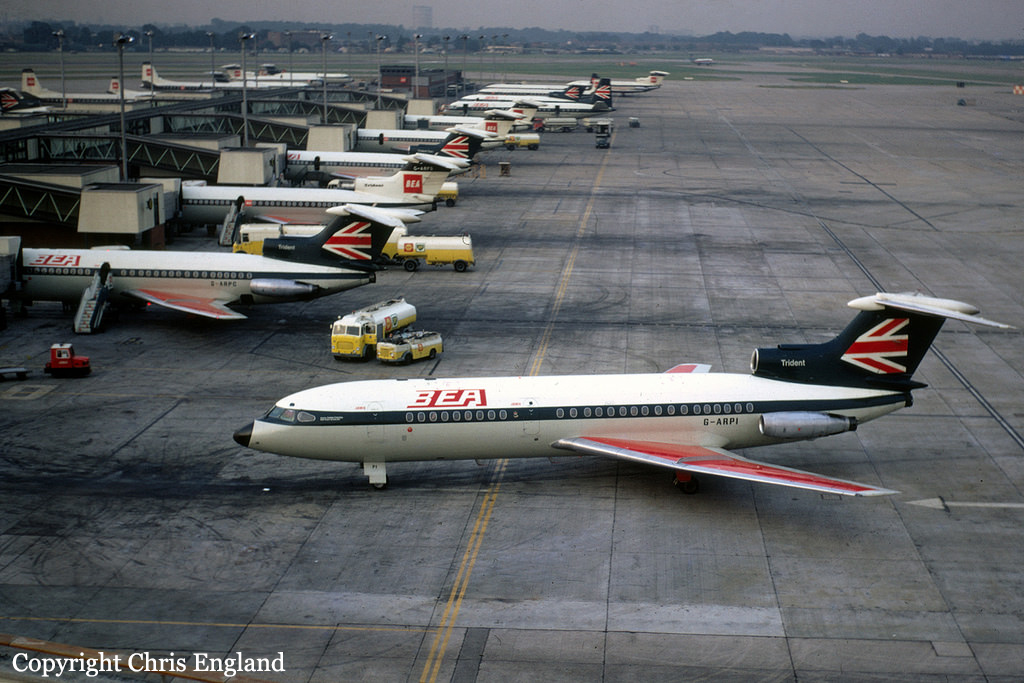
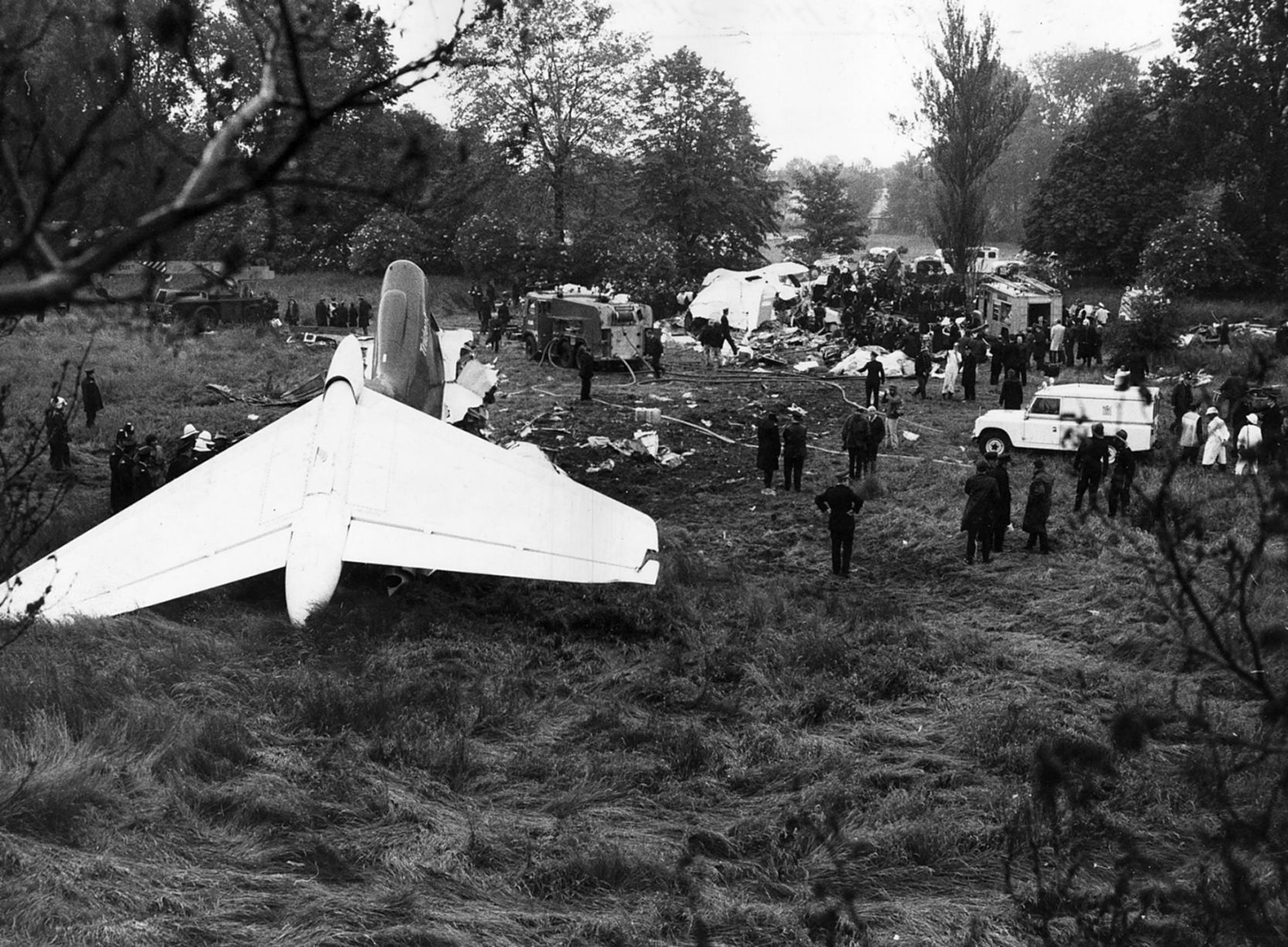
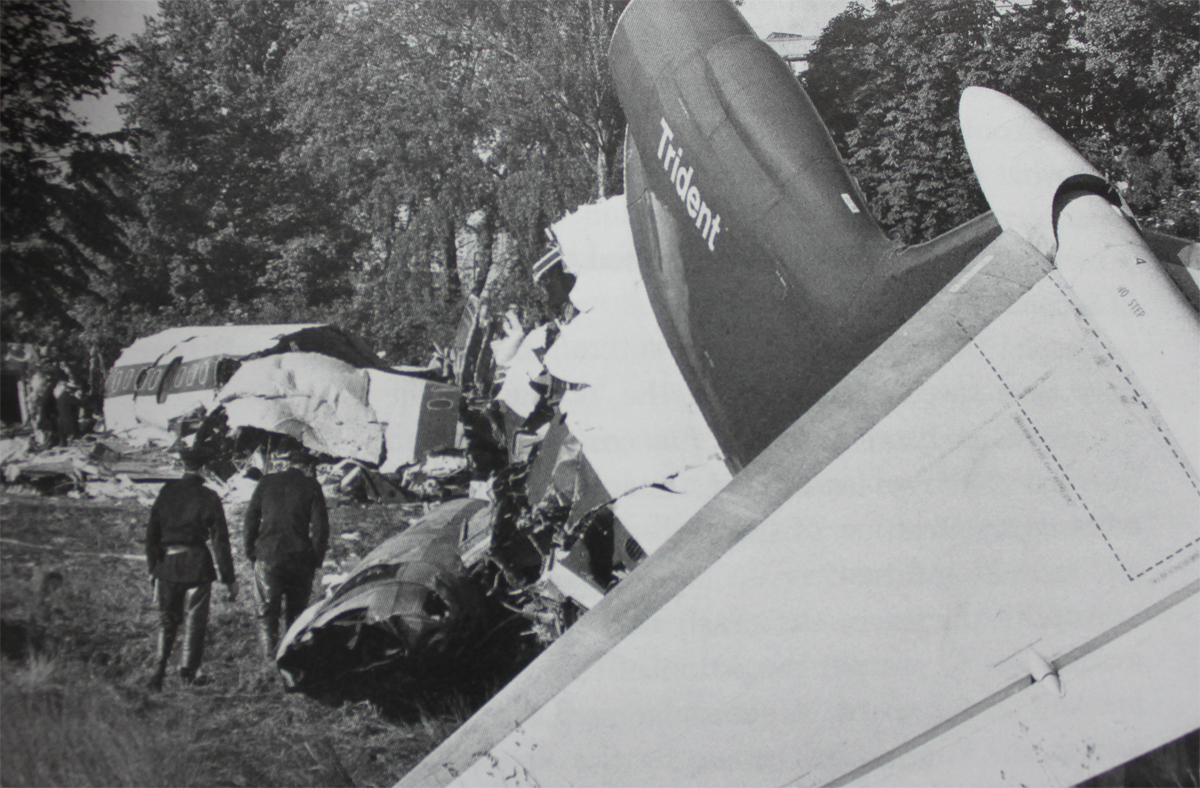
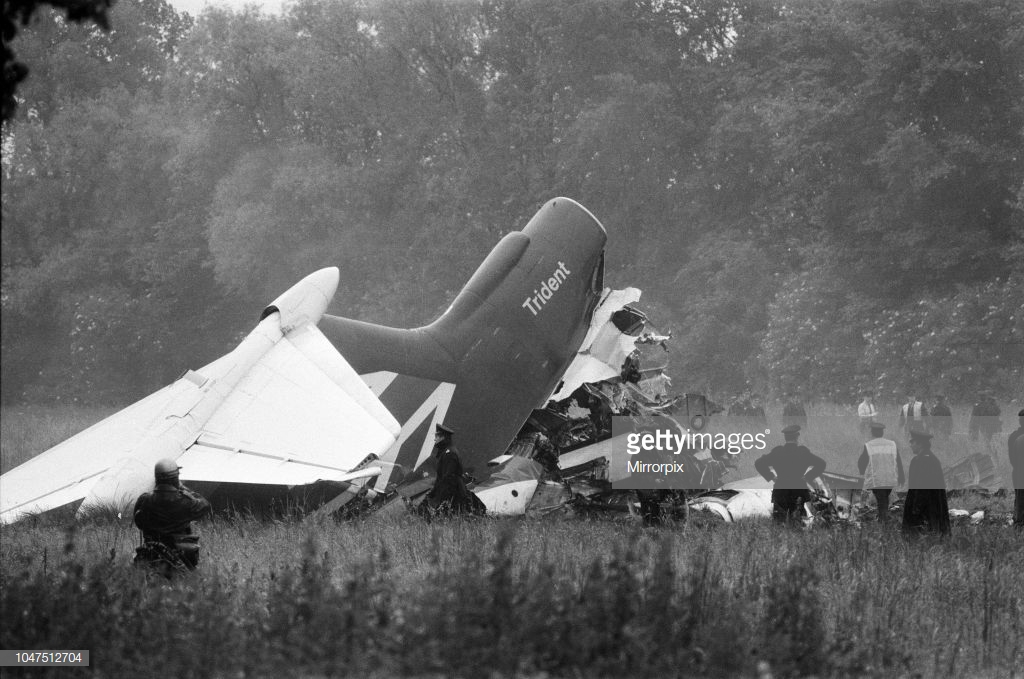
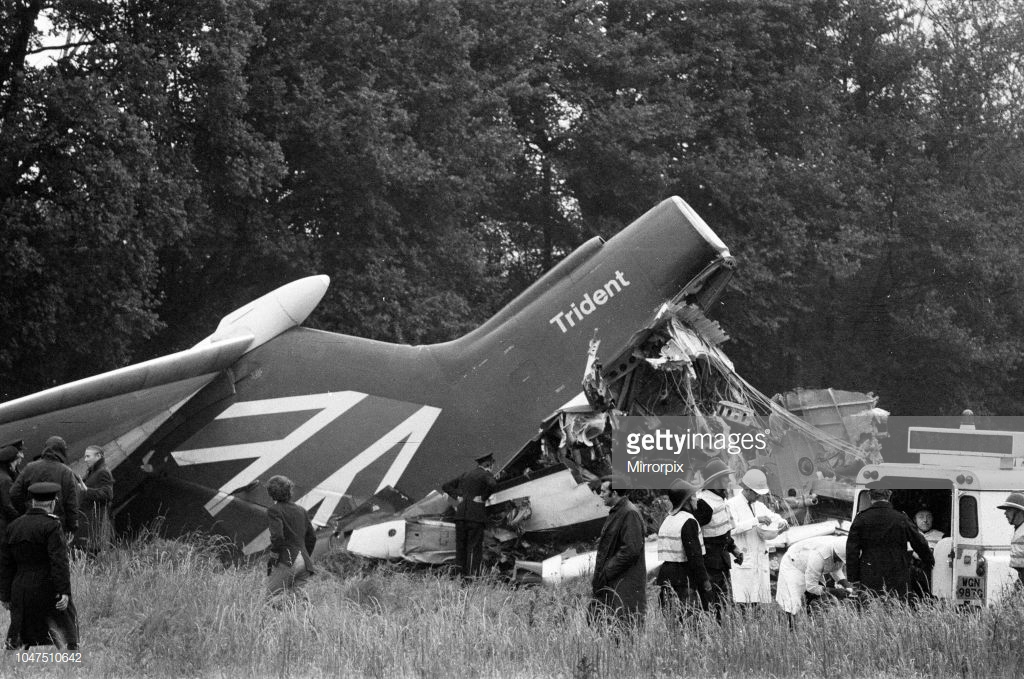
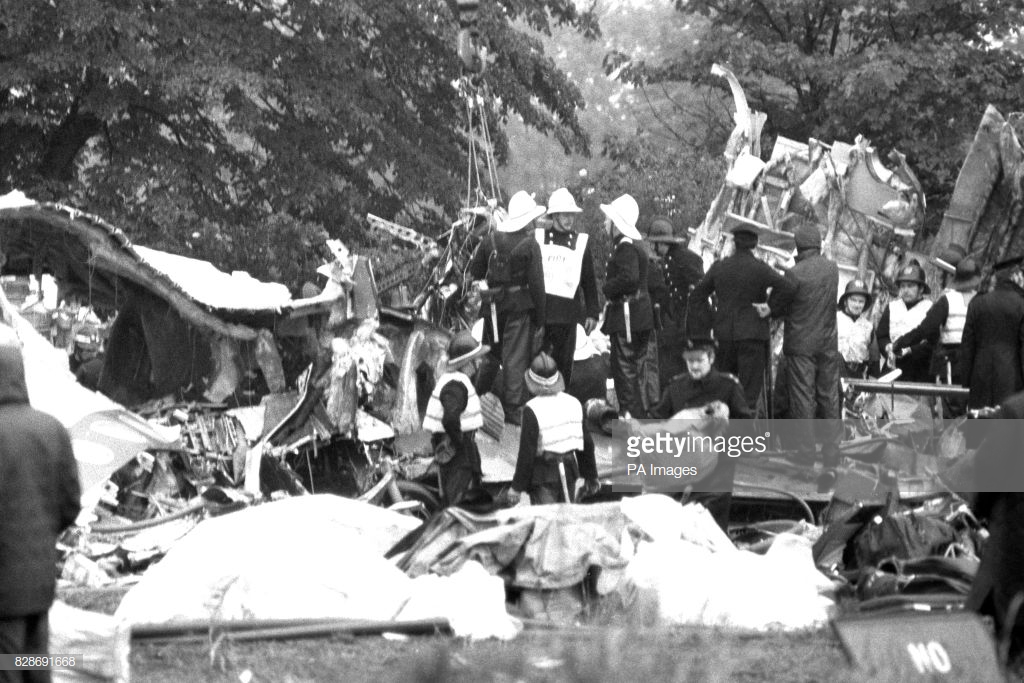

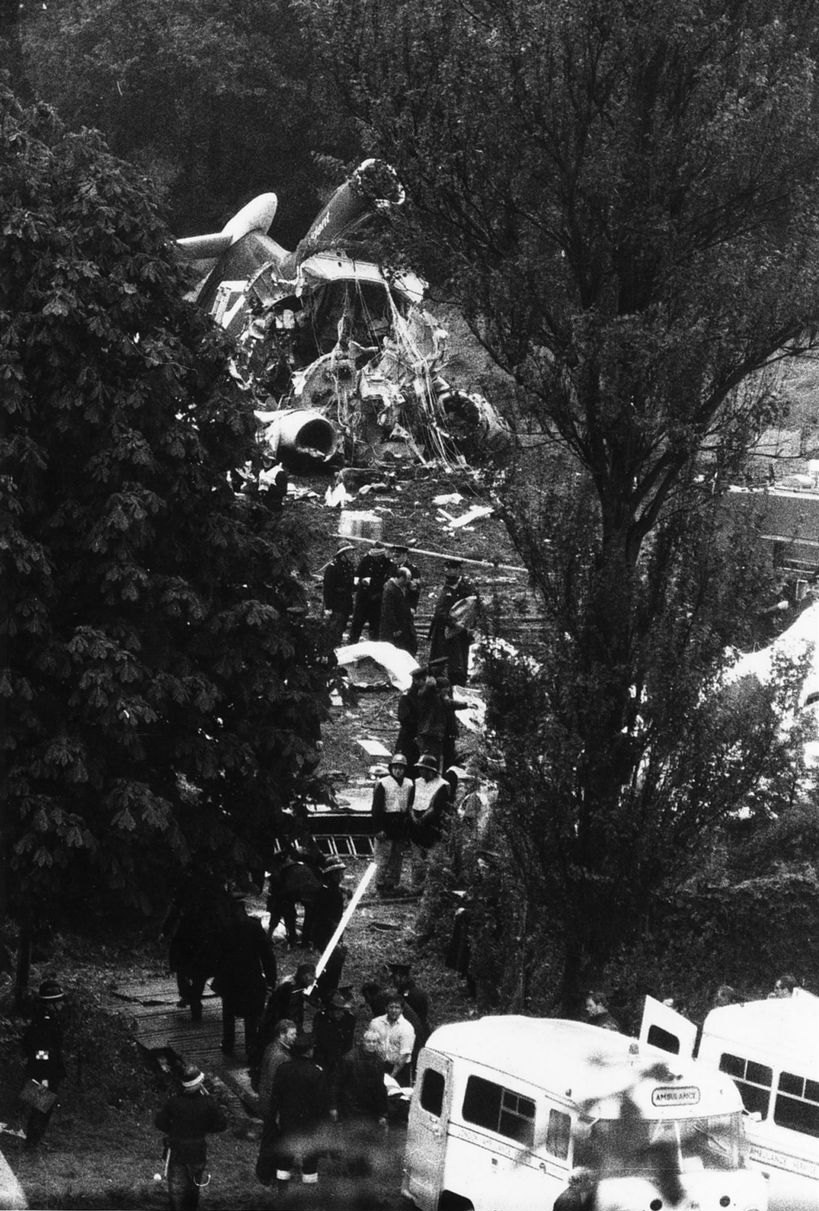
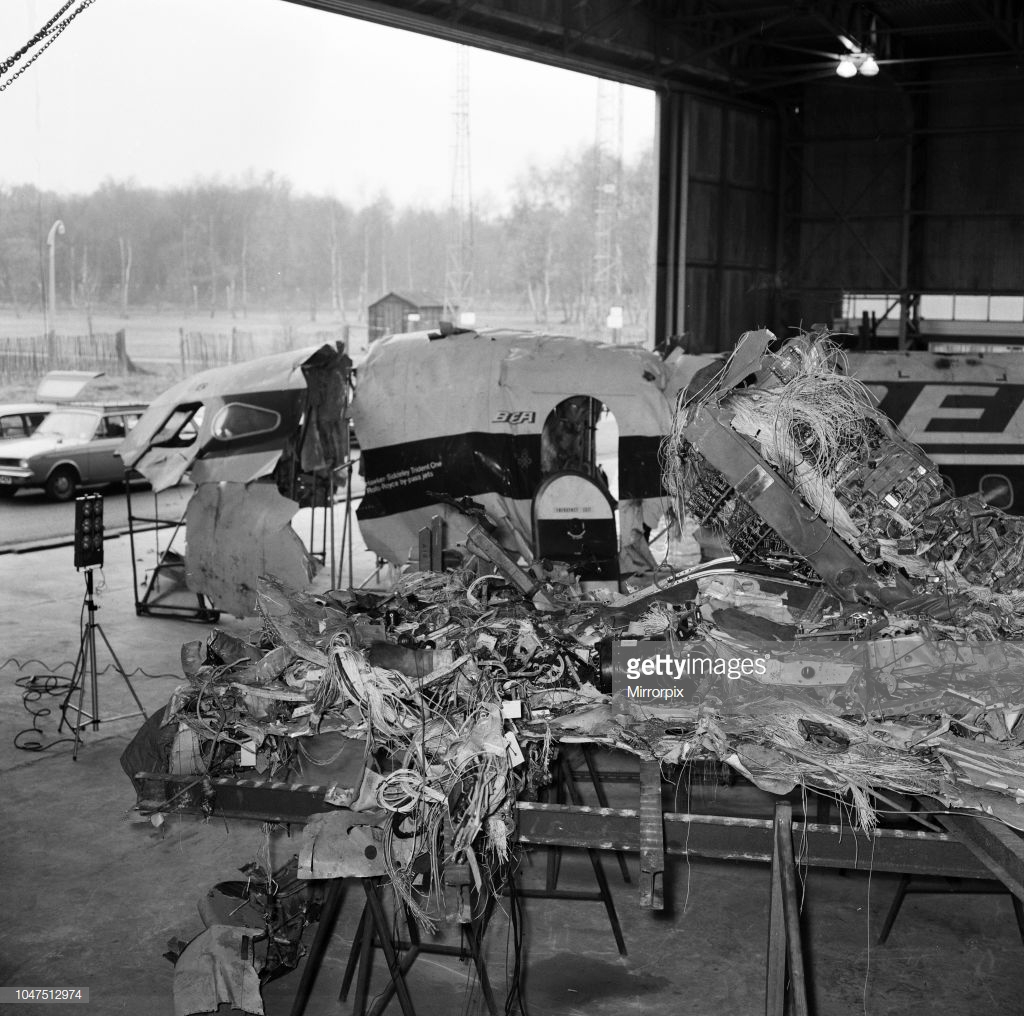
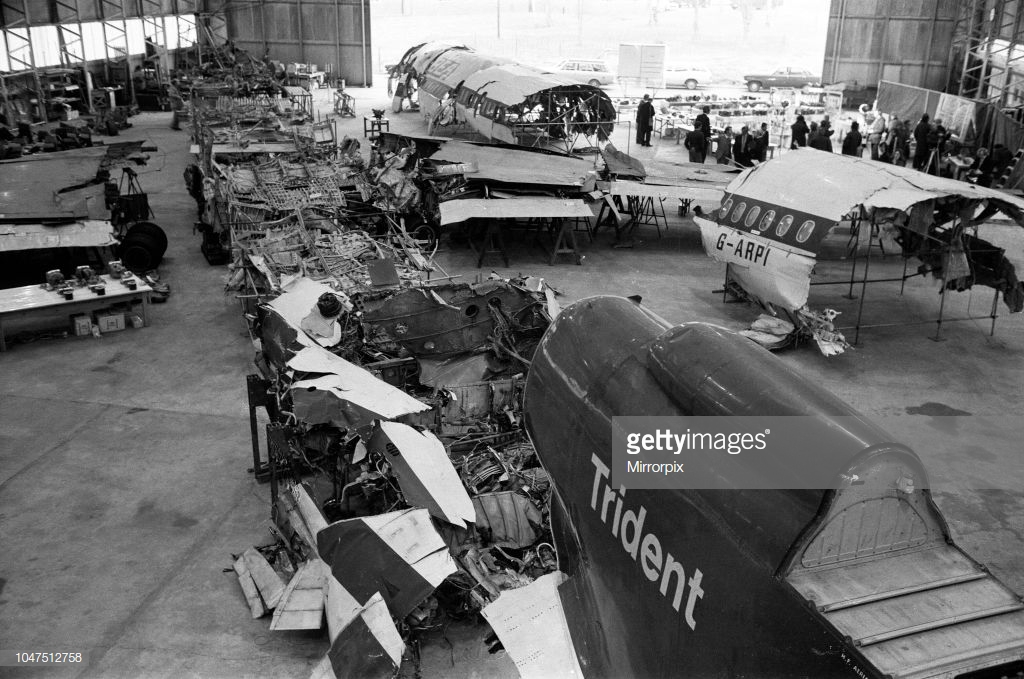
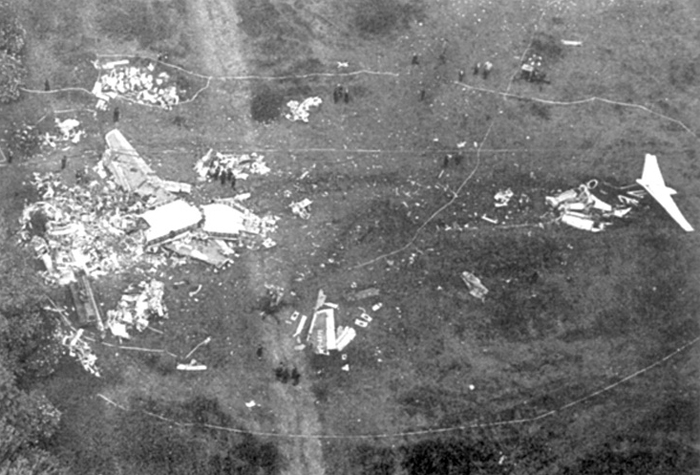
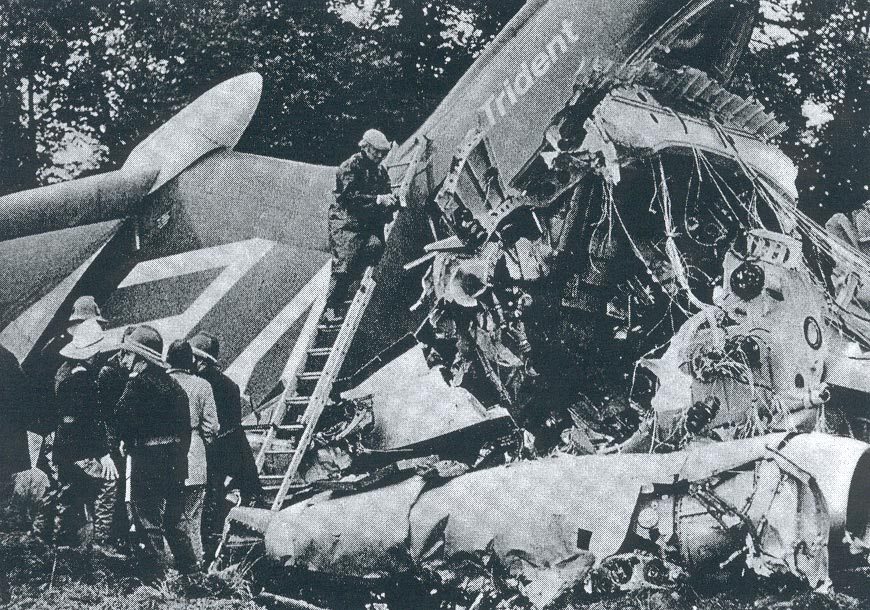
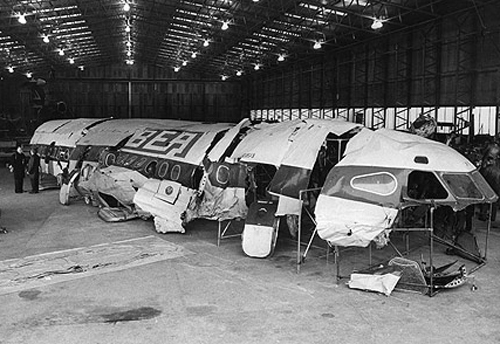
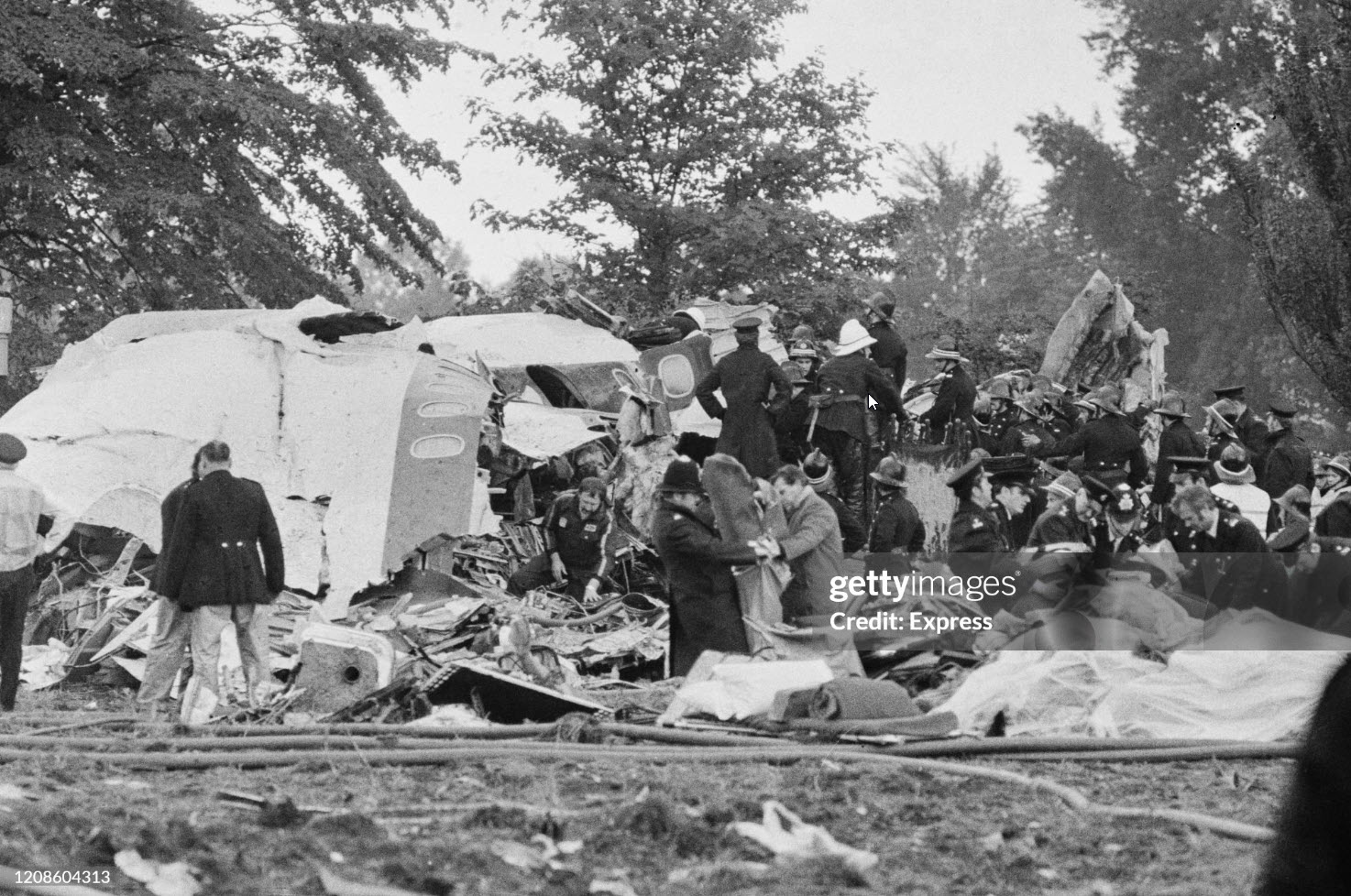
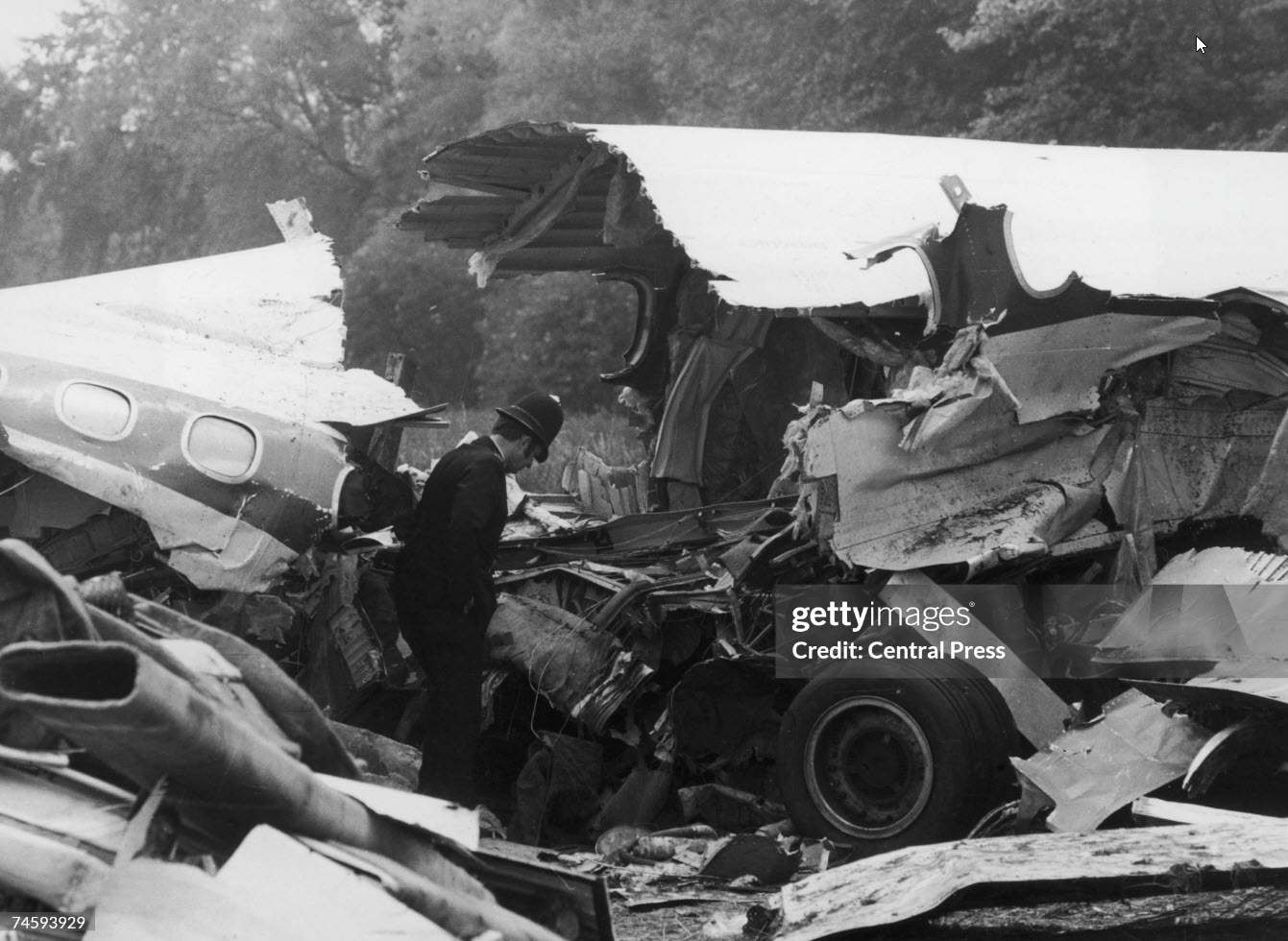
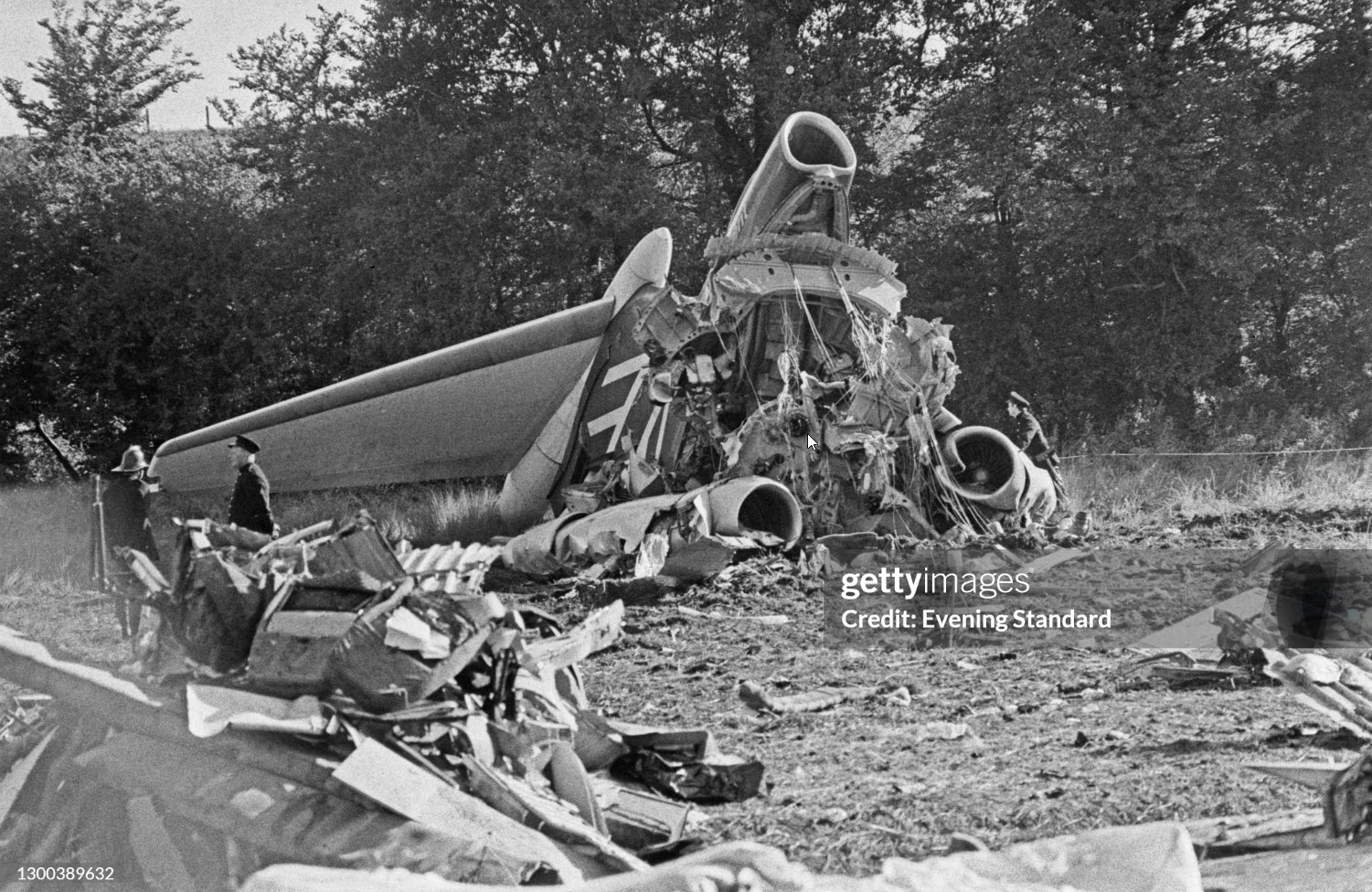
Crash of a Vickers 951 Vanguard in Aarsele: 63 killed
Date & Time:
Oct 2, 1971 at 1110 LT
Registration:
G-APEC
Survivors:
No
Schedule:
London - Salzburg
MSN:
706
YOM:
1959
Flight number:
BE706
Crew on board:
8
Crew fatalities:
Pax on board:
55
Pax fatalities:
Other fatalities:
Total fatalities:
63
Captain / Total hours on type:
1927.00
Copilot / Total hours on type:
764
Aircraft flight hours:
21683
Aircraft flight cycles:
17261
Circumstances:
En route from London-Heathrow to Salzburg at an altitude 19,000 feet, the rear pressure bulkhead ruptured. An explosive decompression of the fuselage occurred, causing serious interior damage and severe distortion of upper tailplane skin attachments. The tail surfaces subsequently detached, causing the airplane to enter a steep dive. The Vanguard spiraled down out of control and crashed in a field next to a highway. During the investigation corrosion was found in the lower part of the rear pressure bulkhead underneath plating that was bonded to the structure. The bond was completely delaminated in this area and the bulkhead material literally eaten away. Fluid contamination, perhaps from the lavatory, was thought to have been the root cause for the corrosion.
Probable cause:
The accident was caused by the rupture of the rear pressure bulkhead, which led to the separation both tailplanes in flight and caused the aircraft to dive into the ground.
Final Report:
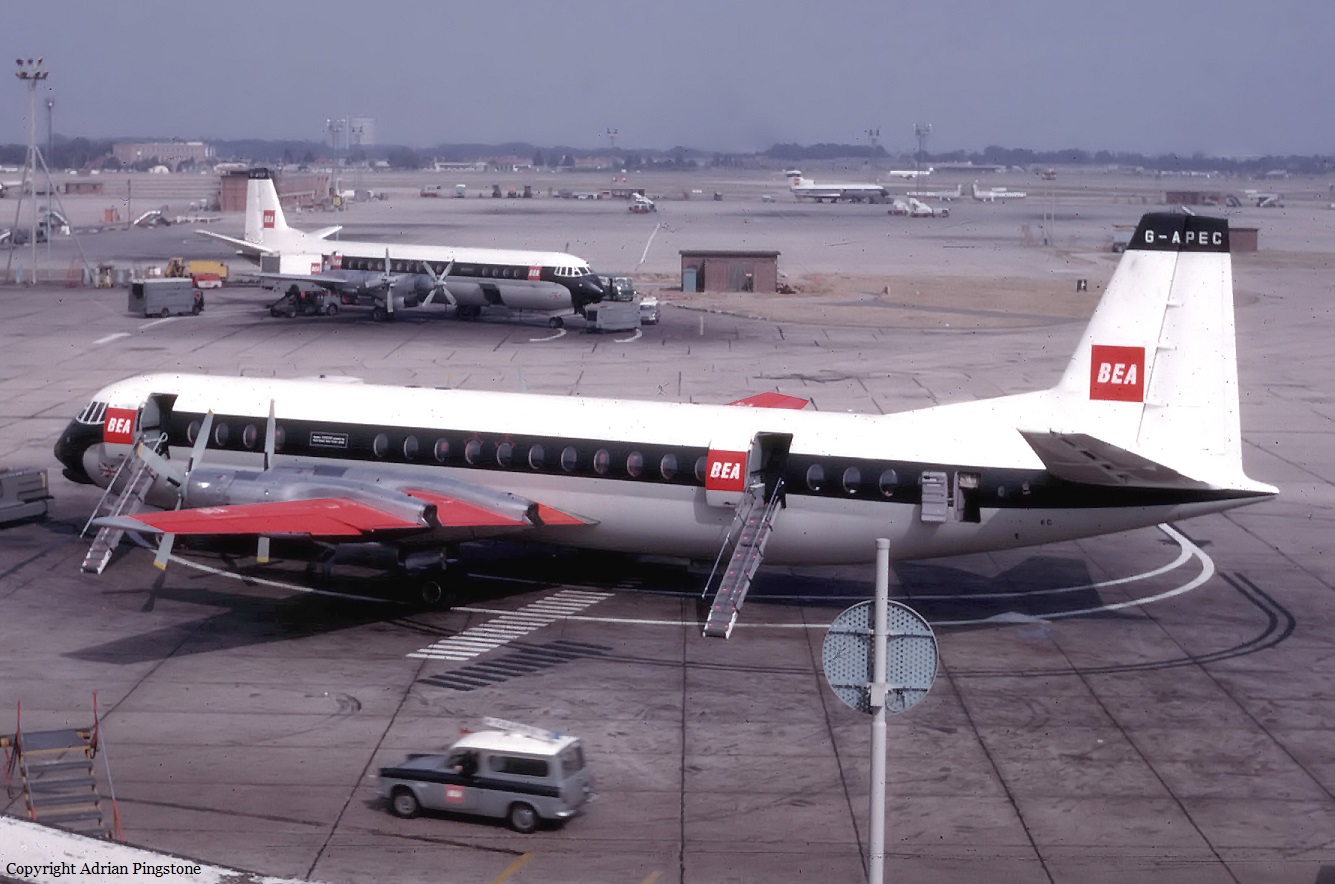
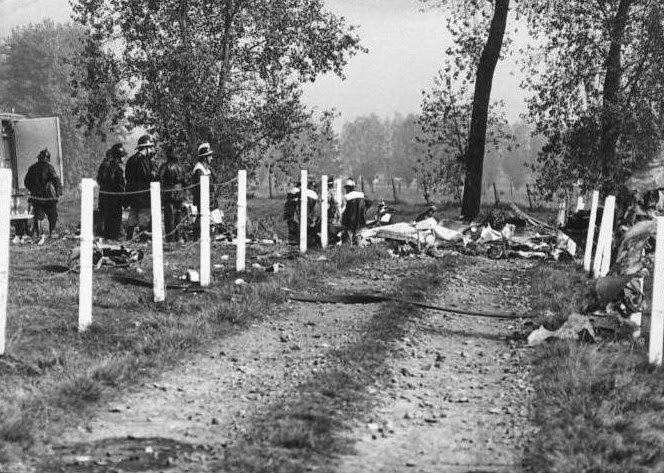
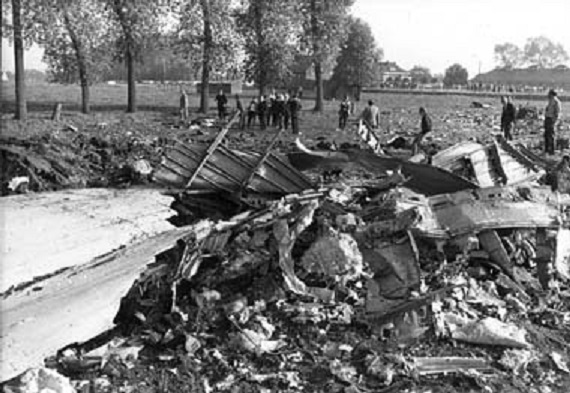
Crash of a Hawker-Siddeley HS.121 Trident in London
Date & Time:
Jul 3, 1968
Registration:
G-ARPT
Survivors:
Yes
MSN:
2121
YOM:
1965
Crew on board:
0
Crew fatalities:
Pax on board:
0
Pax fatalities:
Other fatalities:
Total fatalities:
0
Circumstances:
While parked on apron at Heathrow Airport, the three engine airplane was struck by a BKS Air Transport Airspeed AS.57 Ambassador 2 that crashed on landing. The aircraft was empty so there were no injuries but it irreparable.
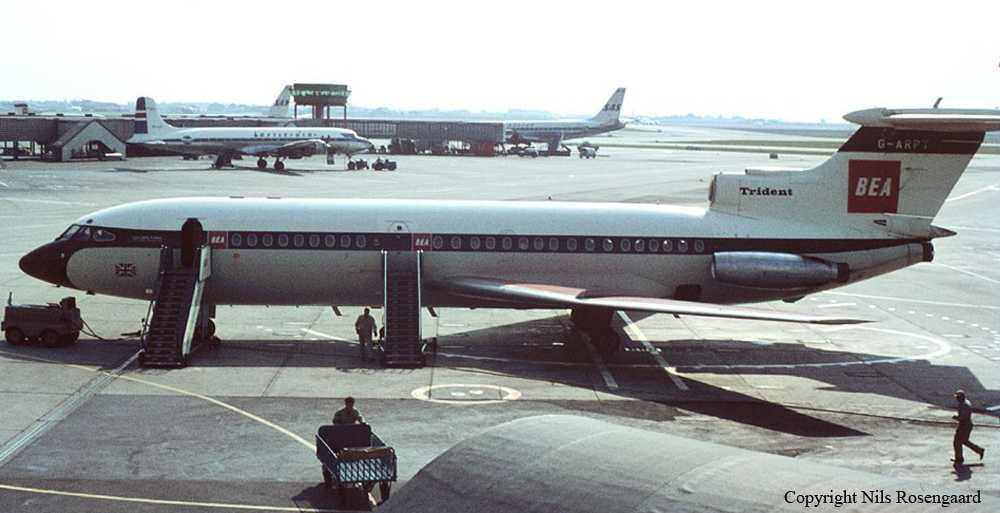
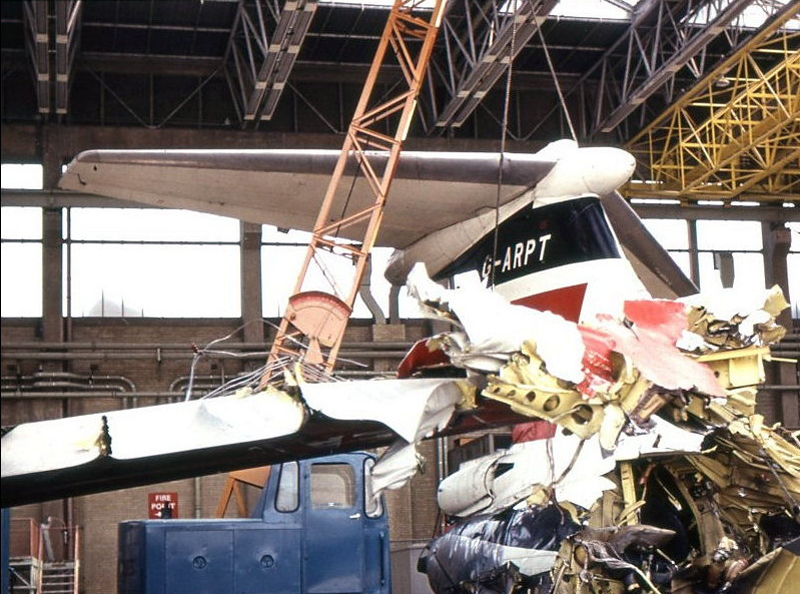
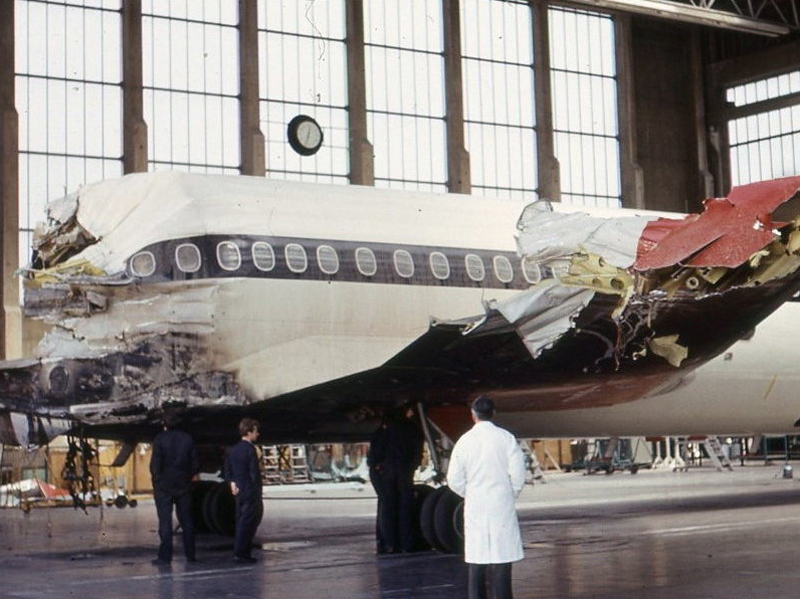
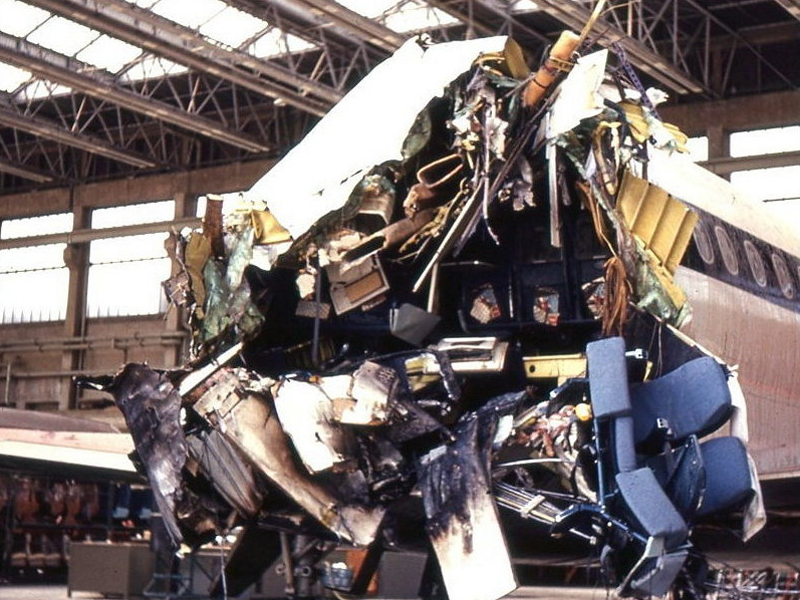
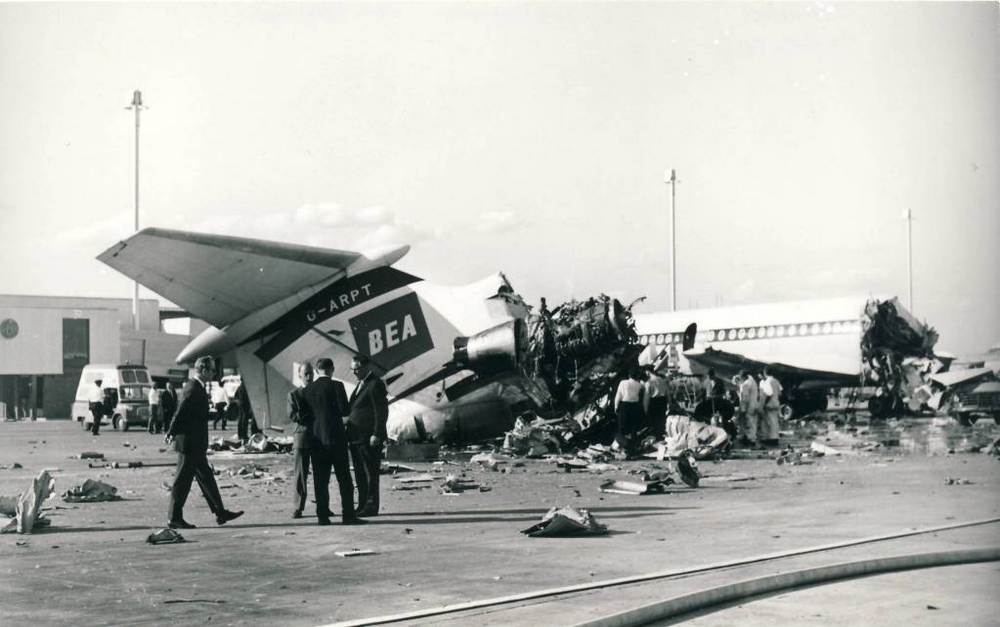

Crash of an Armstrong Whitworth AW.650 Argosy 222 in Stansted
Date & Time:
Dec 4, 1967
Registration:
G-ASXP
Survivors:
Yes
Schedule:
Stansted - Stansted
MSN:
6804
YOM:
1965
Crew on board:
3
Crew fatalities:
Pax on board:
0
Pax fatalities:
Other fatalities:
Total fatalities:
0
Circumstances:
The crew was engaged in a local training flight at Stansted Airport. Shortly after takeoff, while in initial climb, the crew lost control of the airplane that stalled and crashed in flames in an open field. The aircraft was destroyed and all three crew members were injured. The crew was simulating an engine failure at takeoff when control was lost.
Probable cause:
The accident was due to a loss of control during a takeoff with a simulated failure of the engine. The loss of control was most probably the result of No.4 propeller going into ground fine pitch when the engine was throttled back.

